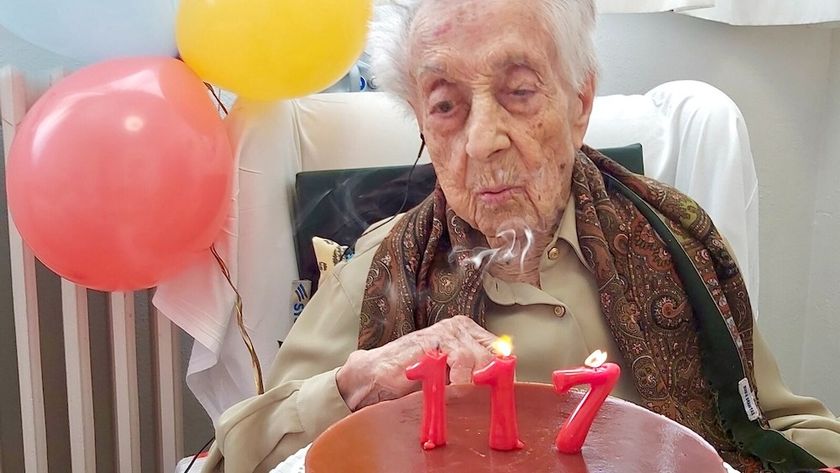Keep Your Pants, and Your Dignity, at the Hospital

Although the white coats that doctors wear have been scrutinized for their authoritarian look, the open-in-the-back gowns that hospital patients wear, and the effect these gowns have on patients' dignity and state-of-mind while in the hospital, have gone largely unexamined.
But now, doctors are looking into how patients' experiences while in the hospital could be improved if they were simply allowed or even encouraged to wear pants.
The open-backed, pantless gowns that leave the lower body exposed are common attire for hospitalized patients in many countries. But some doctors argue the garments may strip patients of their dignity and self-esteem, and push them into the passive and low-status "patient role." [10 Weird and Terrifying Medical Instruments from the Past]
"There are a number of ways in which the hospital system traumatizes patients, and one of those is that we take away the patients' clothes and put them in a somewhat depersonalizing, unisex blue gown, when that's not completely necessary," Dr. Todd Lee, an assistant professor of Medicine at McGill University in Montreal, told Live Science.
In a new study, Lee and his colleagues set out to find what percentage of patients really needed to wear these gowns because of their medical problems, and whether patients would want to wear something else if given the choice. The researchers looked at 127 patients who were admitted on a single day to five hospitals in Toronto and Montreal. Study authors noted whether the patients wore anything more substantial than underwear or adult diapers. The researchers also asked the doctors if they would let the patient wear pants or similar garments if the patient requested to do so.
The results showed that only 11 percent of the patients wore lower-body clothing beyond undergarments.
Although the doctors said that 56 percent of the patients could wear pants without causing a medical problem, only 25 percent of these patients actually did so, according to the findings, published today (Sept. 22) in the journal JAMA Internal Medicine.
Sign up for the Live Science daily newsletter now
Get the world’s most fascinating discoveries delivered straight to your inbox.
In other words, most of the patients didn't wear pants, even though more than half of them could have done so, the researchers said. Although the study is small, the researchers said they suspect the situation is similar in other hospitals.
Post-hospital syndrome
The issue of hospital gowns may have implications beyond the dignity of the patients, the researchers said. These gowns are part of patients' overall experience at the hospital, which may play a role not only in the patients' recovery but also in their health after their hospital stay.
In recent years, studies have revealed that it is common for patients to leave the hospital only to return with a new illness. In an attempt to explain the phenomenon, Dr. Harlan Krumholz, a professor of medicine and public health at Yale School of Medicine, has suggested patients may suffer from a period of vulnerability, which he called the "post-hospital syndrome." The combination of a recovering body and a stressful hospital experience could make people less able to fend off new diseases, Krumholz wrote in his 2013 article published in the New England Journal of Medicine.
Pain, a lack of privacy, examinations by strangers who fail to identify themselves and other factors may make a hospital stay traumatic for the patient, Krumholz wrote.
One way to improve patients' experience would be to encourage them to wear their own clothing, Krumholz and his colleague Dr. Allan Detsky, of the University of Toronto, suggested in a recent commentary published in JAMA in June. "This would help patients maintain their self-esteem and orientation, and also remind their care professionals to recognize them as people," the doctors wrote.
Most patients may also welcome the choice of wearing pants. In the new study, Lee found 17 patients at one hospital who could wear pants without causing a problem, according to their doctors, and asked these patients whether they preferred to wear pants. Thirteen of the patients said they wanted to wear pants. The other four patients expressed indifference, and said they were comfortable with the hospital gown, Lee said.
Lee noted that encouraging patients to wear their own clothes does introduce concerns about laundry, but the benefits would likely outweigh the problems. Alternatively, hospitals could provide scrubs made for patients, which may be a costlier choice but would be easy to put on and easy to launder.
"Any clothing is probably superior to the gown, even if patients were wearing pajamas that allowed them to walk around the hallway without exposing themselves," Lee said.
Email Bahar Gholipour. Follow Live Science @livescience, Facebook & Google+. Originally published on Live Science.










